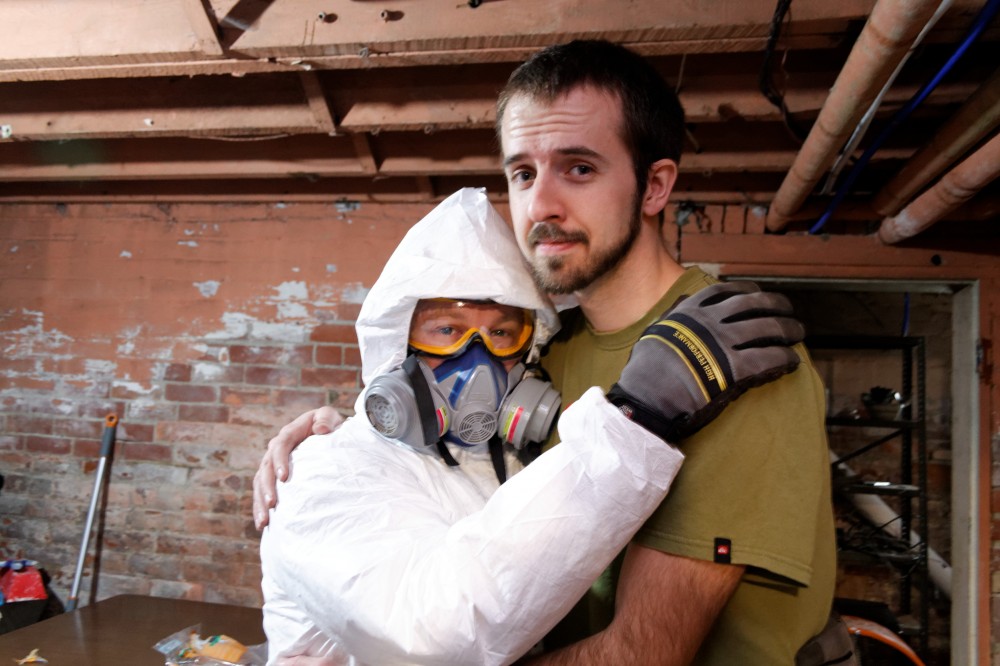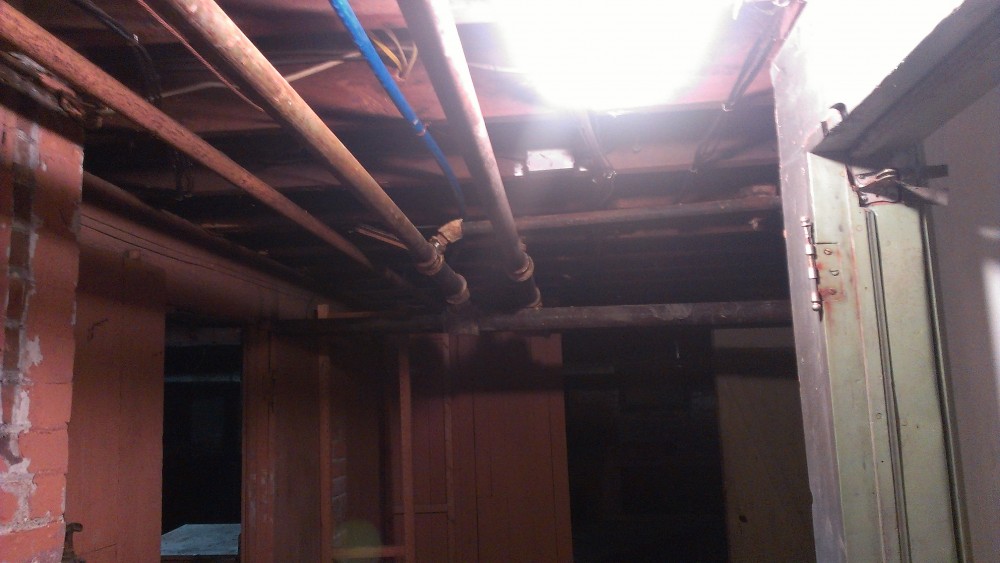When one buys an historic home in an historic district, one generally acquires certain materials that were used to build said home in the era in which it was produced. Those materials, as has been revealed by modern medical science, are listed now in this more enlightened era as “hazardous” materials. I speak of things like asbestos and lead.
Asbestos is a natural substance—a mineral, in fact–that has the curious property of being both highly insulating and generally fireproof. Therefore it was no surprise that our forefathers felt this was a superior material with which to insulate things like radiator pipes. As hot water flows through the pipes in the basement, they lose a lot of heat. Your basement gets nice and cozy, of course, but this isn’t the desired effect. They need to be insulated (think of a blanket wrapped around the pipe). Asbestos was a fine material for this. Asbestos happens to be very, very fine—like talc. When wet, it basically forms a plaster. They used this asbestos paste to coat the pipes, then wrapped them all up in strips of cotton cloth, which could easily be painted over. It’s basically just like a cast that is used to set a broken bone.
Sounds good, so far… except it was discovered some time ago that asbestos, being both an abrasive mineral and exceptionally fine and powder-like, causes a form of cancer known as mesothelioma when a person is exposed to the airborne particles over a length of time. Generally, exposure involves long and repeated exposure to airborne asbestos fibers; those who work in the asbestos industry, or in building demolition and things of that nature are at highest risk.
Asbestos in the home is generally safe as long as it’s not disturbed. The idea is to avoid having the asbestos flake off into powder. If it’s damaged or bumped or cut or disturbed, it can go airborne, which is when it becomes dangerous.
We had failing asbestos in several areas of the basement. It was flaking off in many areas and we needed abatement. The problem is, abatement is a very labor-intensive job that, for our amount of asbestos, was a five-figure proposition.
We don’t have five figures. At this point, we barely have four. Some days, we have three. We had to do it ourselves.
After a lot of reading, talking to people who have done this, and more reading, and more talking, we purchased some asbestos-rated removal bags, some Tyvek bunnysuits, some asbestos-rated goggles and some asbestos-rated respirators (the important bit!). Today we sealed off sections of the basement and went to it.
The key to asbestos removal is water. Lots of it. We had a garden hose hooked up to the basement utility sink and a spray nozzle with several settings for various fine mists. The first step was using cutters to remove all the brass pipe straps (bonus–these will be worth a decent amount of money in scrap!) Once the straps were gone, the sections of asbestos were cut away, soaked, and cut away, and soaked, and so on. It was very, very wet and dirty work.
The long, straight sections of pipe were relatively easy to deal with. It was the T-junctions, elbows, and bends that were the problem. While I appreciate the craftsmanship and integrity of the past contractors who installed the insulation, it was a real pain to remove. They basically coated the elbows and joints with asbestos plaster and wrapped it with linen. It was akin to pulling a dusty mummy apart. The wet asbestos turned into a paste that had nowhere to go but down. There was a lot of repeated floor cleanings and scrapings.
It took several hours to get half the basement done. By that time we were both totally exhausted. We’ll have to finish the rest tomorrow.
In the end, we saved several thousand dollars by doing it ourselves. I don’t recommend that any homeowner who has asbestos remove it themselves, as it requires a lot of expensive gear and special disposal equipment, but if you’re industrious and follow all the proper precautions, it can be done.
For now, I’ll be content if this is the last time I ever have to do asbestos removal.




3 thoughts on “Asbestos go bye-bye”